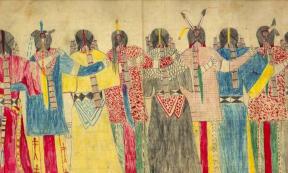Primary tabs
Mark Miller
Mark Miller has a Bachelor of Arts in journalism and is a former newspaper and magazine writer and copy editor who's long been interested in anthropology, mythology and ancient history. His hobbies are writing and drawing.
History
- Member for
- 9 years 4 months
Opt-in to Ancient Origins Newsletter (AC):
No
































